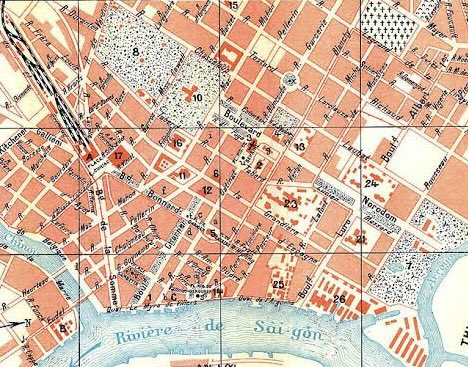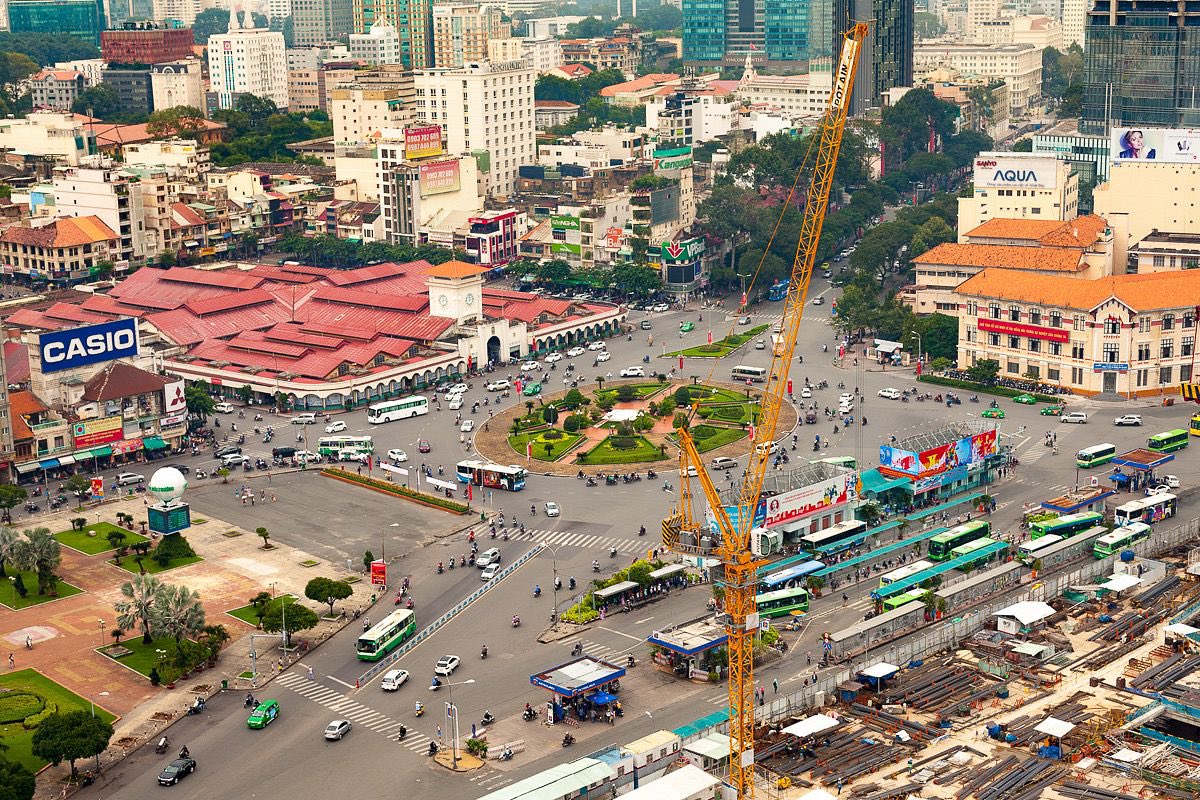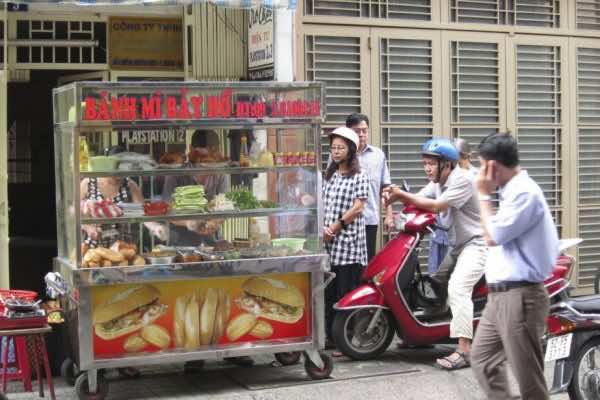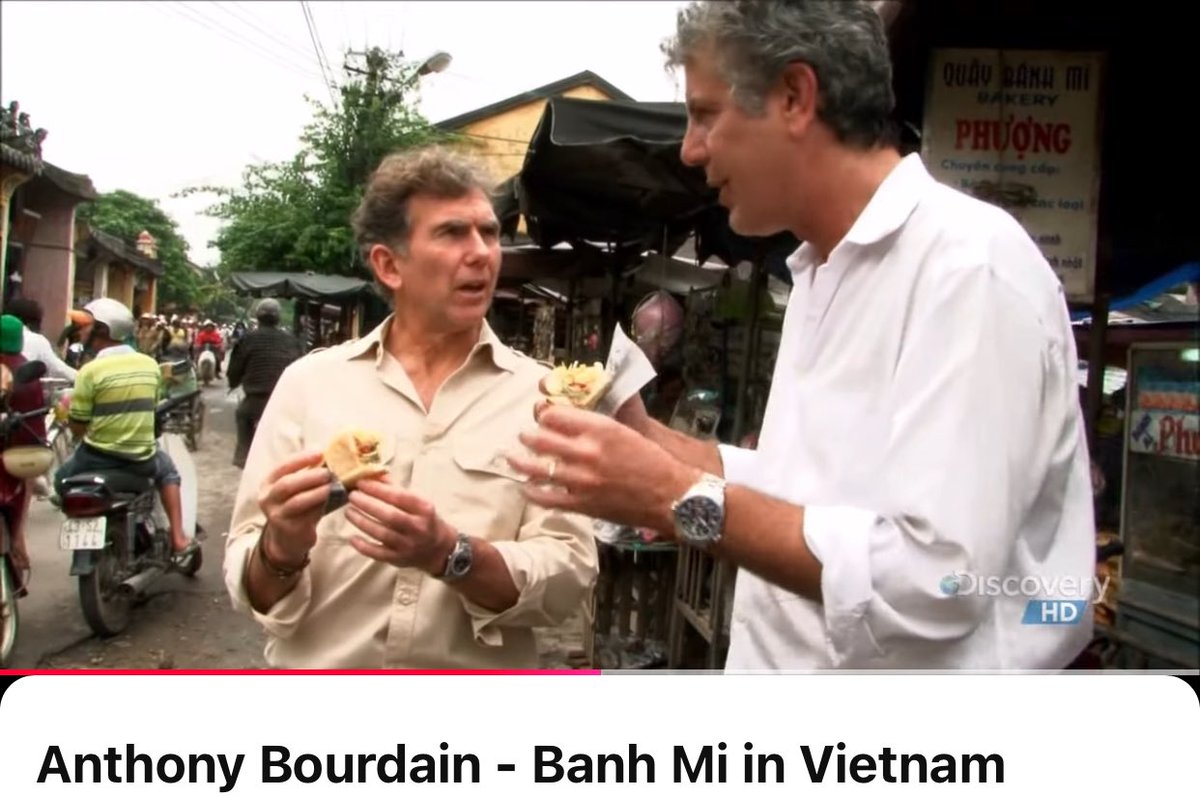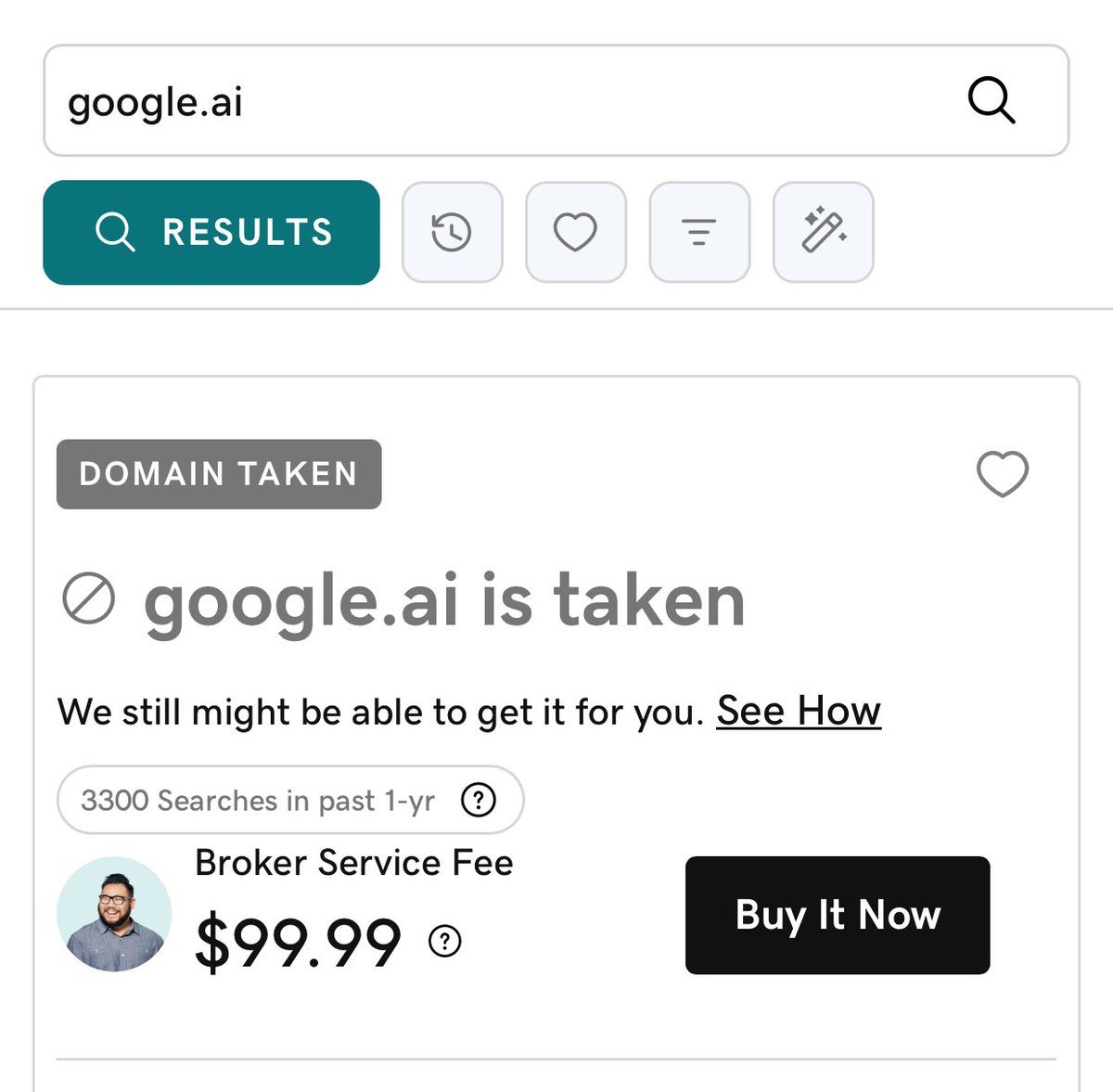You've definitely heard of "The Hero's Journey", the narrative structure found in countless stories dating back to Homer's Odyssey in ~7th century BC.
A great way to learn the framework: comparing scene-by-scene images from "The Matrix" and "Star Wars".
Check it out🧵
A great way to learn the framework: comparing scene-by-scene images from "The Matrix" and "Star Wars".
Check it out🧵
0/ The "Hero's Journey" was coined by Joseph Campbell, an American literary prof.
He studied ancient myths and found many shared a similar character arc (AKA the "monomyth").
It follows 12 stages, with a hero venturing from an "ordinary world" to a "special world" and back.
He studied ancient myths and found many shared a similar character arc (AKA the "monomyth").
It follows 12 stages, with a hero venturing from an "ordinary world" to a "special world" and back.
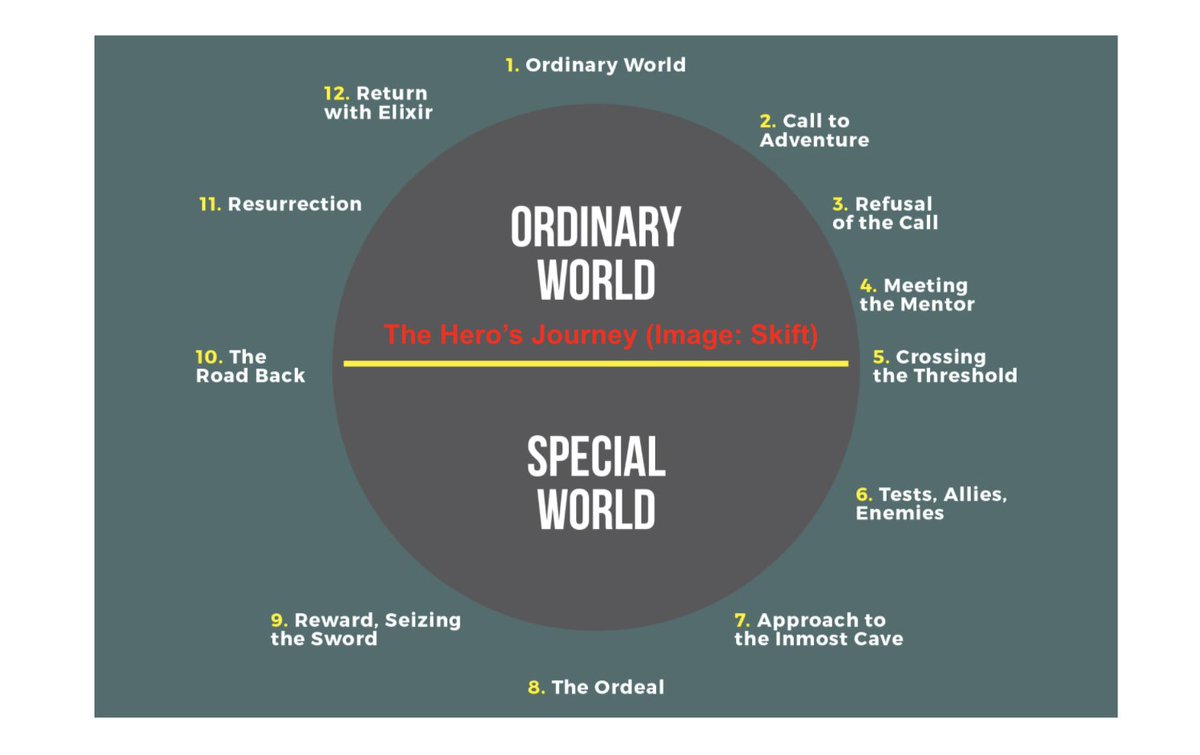
1/ Ordinary world
The hero's normal life before the adventure begins:
◻️ Luke Skywalker lives on a farm in Tatooine
◻️ Neo is a corporate slave in the real world

The hero's normal life before the adventure begins:
◻️ Luke Skywalker lives on a farm in Tatooine
◻️ Neo is a corporate slave in the real world
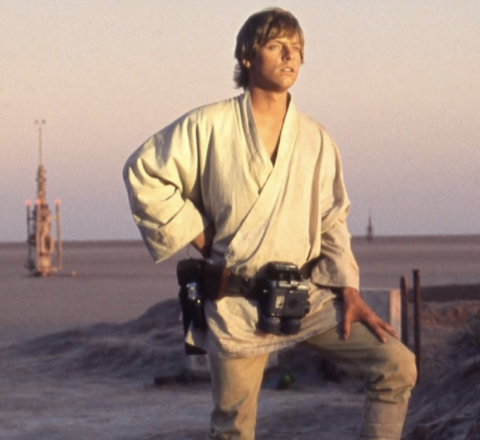

2/ Call to adventure
The hero is faced with an event, conflict, problem, or challenge that starts the adventure:
◻️ R2D2 flashes a hologram of Princess Leia asking Obi-Wan for help
◻️ Neo is sent a message to "follow the white rabbit"

The hero is faced with an event, conflict, problem, or challenge that starts the adventure:
◻️ R2D2 flashes a hologram of Princess Leia asking Obi-Wan for help
◻️ Neo is sent a message to "follow the white rabbit"

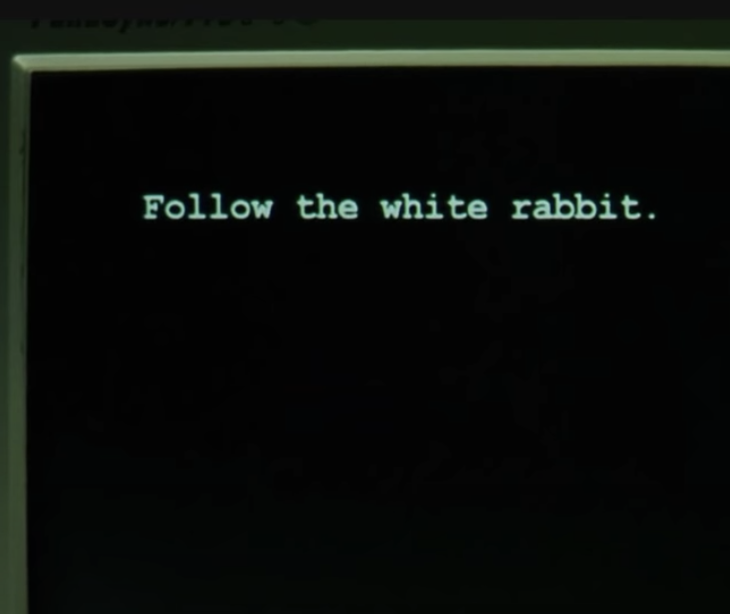
3/ Refusal of the call
The hero refuses the adventure because of hesitation, fears, insecurity or other:
◻️ Luke tells Obi-Wan he has to stay on Tatooine farm to help his aunt and uncle
◻️ When agents come to his office, Neo won't escape by stepping outside the window

The hero refuses the adventure because of hesitation, fears, insecurity or other:
◻️ Luke tells Obi-Wan he has to stay on Tatooine farm to help his aunt and uncle
◻️ When agents come to his office, Neo won't escape by stepping outside the window

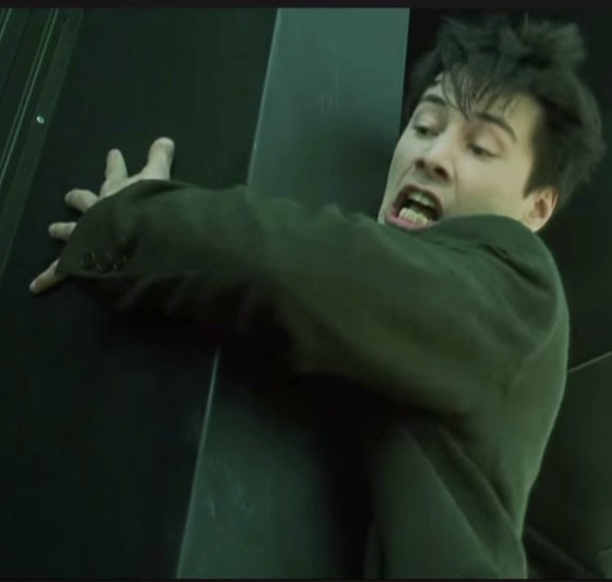
4/ Meeting the mentor
The hero encounters a mentor that can give them advice, wisdom, information, or items that preps them for journey:
◻️ Luke's aunt and uncle murdered by stormtroopers, he agrees for Obi-Wan to train him
◻️ Neo meets Morpheus, who soon trains him



The hero encounters a mentor that can give them advice, wisdom, information, or items that preps them for journey:
◻️ Luke's aunt and uncle murdered by stormtroopers, he agrees for Obi-Wan to train him
◻️ Neo meets Morpheus, who soon trains him
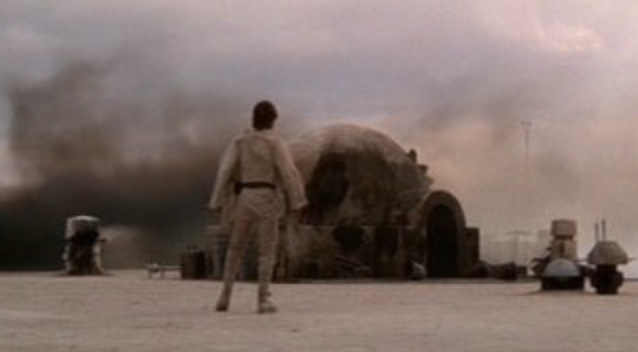

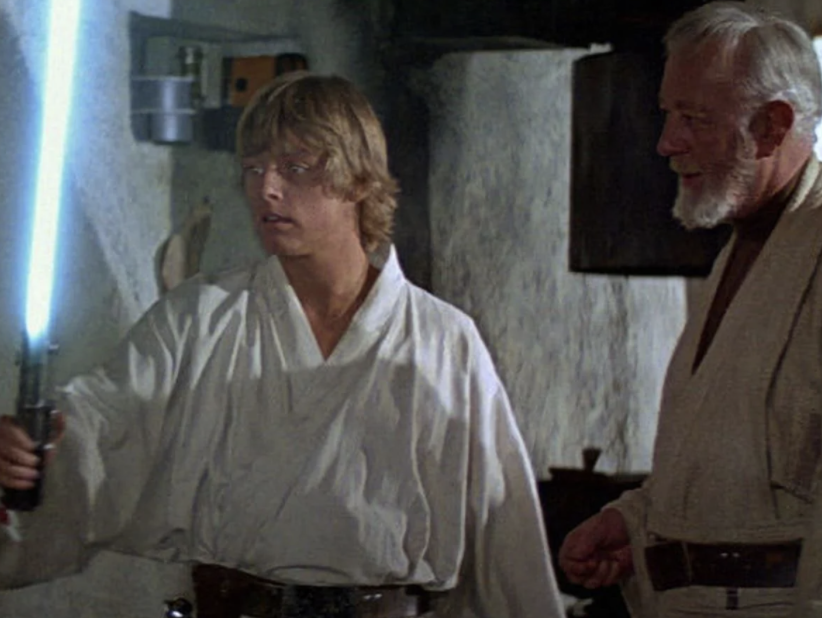

5/ Crossing the threshold
The hero leaves the ordinary world for the first time and crosses the threshold into adventure:
◻️ Luke follows Obi-wan to the Mos Eisley spaceport (a "wretched hive of scum and villainy", Luke no longer safe)
◻️ Neo takes the red pill, leaves Matrix



The hero leaves the ordinary world for the first time and crosses the threshold into adventure:
◻️ Luke follows Obi-wan to the Mos Eisley spaceport (a "wretched hive of scum and villainy", Luke no longer safe)
◻️ Neo takes the red pill, leaves Matrix

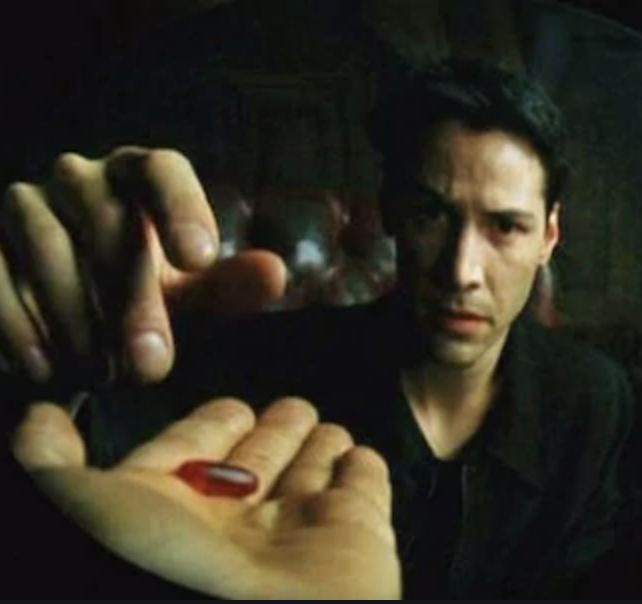
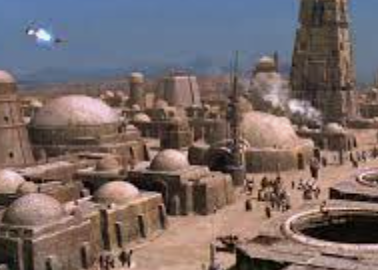

6/ Test, Allies, Enemies
The hero learns the rules of the new world and endures tests, meets friends, and confronts enemies:
◻️ Luke meets Han Solo / Chewy, starts journey
◻️ Neo meets the team on the Nebuchadnezzar Ship, learns about the "real world"

The hero learns the rules of the new world and endures tests, meets friends, and confronts enemies:
◻️ Luke meets Han Solo / Chewy, starts journey
◻️ Neo meets the team on the Nebuchadnezzar Ship, learns about the "real world"


7/ The Approach
The initial plan to take on the central conflict begins, but setbacks occur that cause the hero to try a new approach:
◻️ Luke to meet Rebels on Alderaan, but the planet is destroyed
◻️ Neo meets The Oracle, who says he's *not* The One

The initial plan to take on the central conflict begins, but setbacks occur that cause the hero to try a new approach:
◻️ Luke to meet Rebels on Alderaan, but the planet is destroyed
◻️ Neo meets The Oracle, who says he's *not* The One

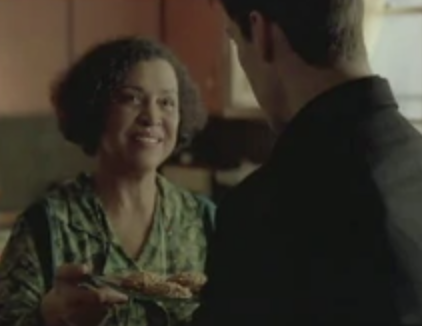
8/ The Ordeal
Things go wrong and a new conflict is introduced, incl. a potential life or death situation:
◻️ Luke and Co. save Leia but Obi-Wan sacrifices himself to Vader
◻️ Morpheus abducted during ambush, Neo and Trinity return to save him



Things go wrong and a new conflict is introduced, incl. a potential life or death situation:
◻️ Luke and Co. save Leia but Obi-Wan sacrifices himself to Vader
◻️ Morpheus abducted during ambush, Neo and Trinity return to save him
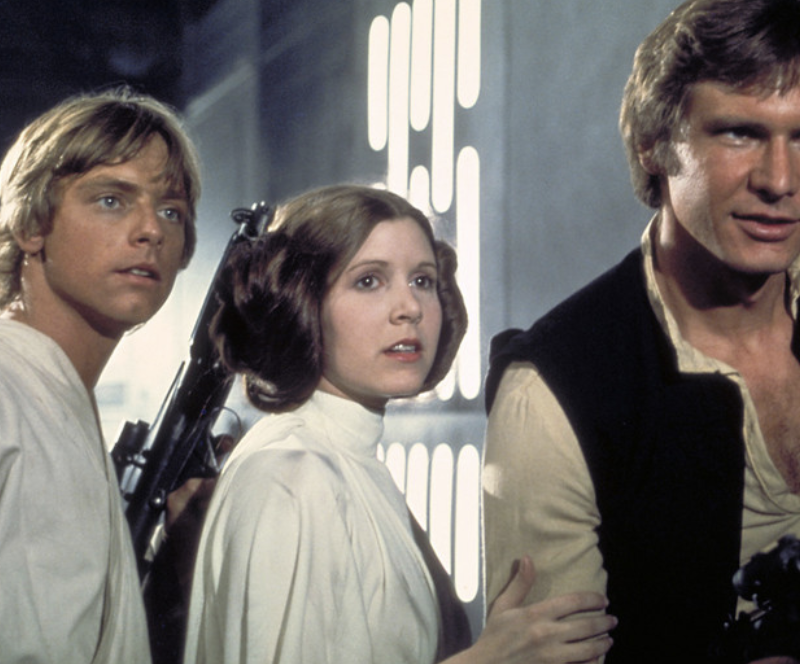
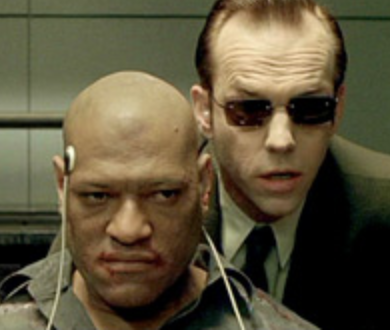
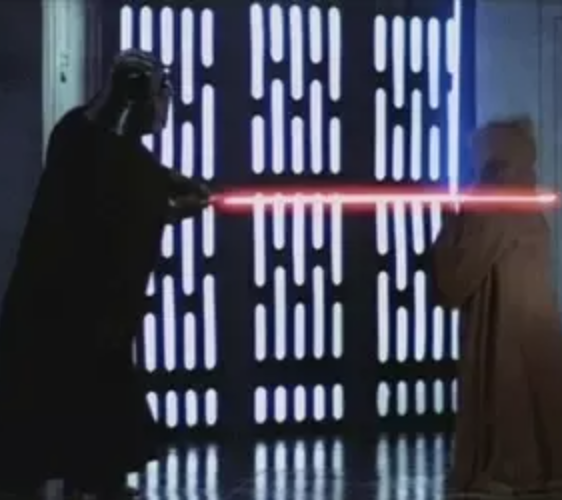
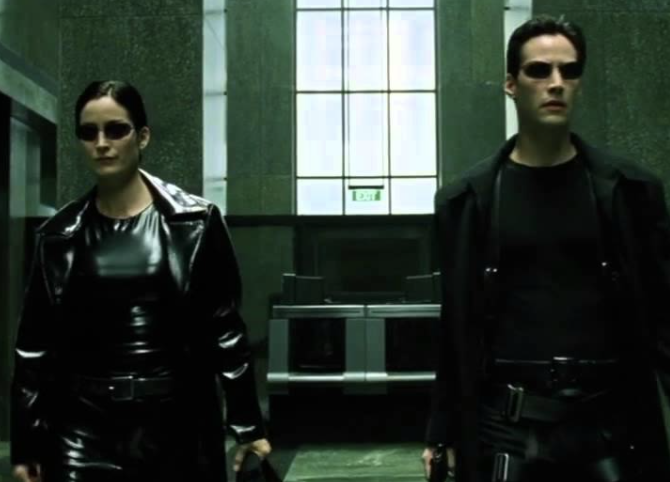
9/ Seizing the Sword
After surviving The Ordeal, hero gains a reward (knowledge, physical item) to take on the biggest conflict:
◻️ Luke saves Princess Leia and has Death Star plans
◻️ Neo saves Morpheus and has confidence he is The One after fighting Agent Smith

After surviving The Ordeal, hero gains a reward (knowledge, physical item) to take on the biggest conflict:
◻️ Luke saves Princess Leia and has Death Star plans
◻️ Neo saves Morpheus and has confidence he is The One after fighting Agent Smith
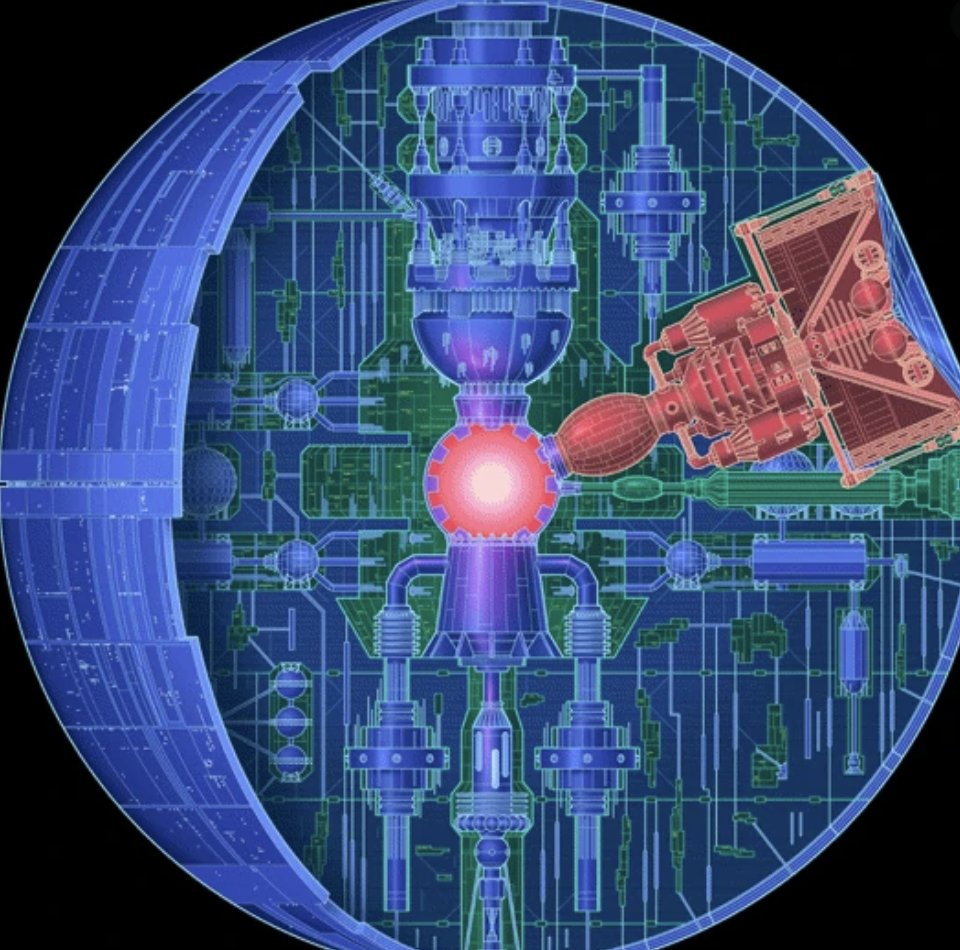
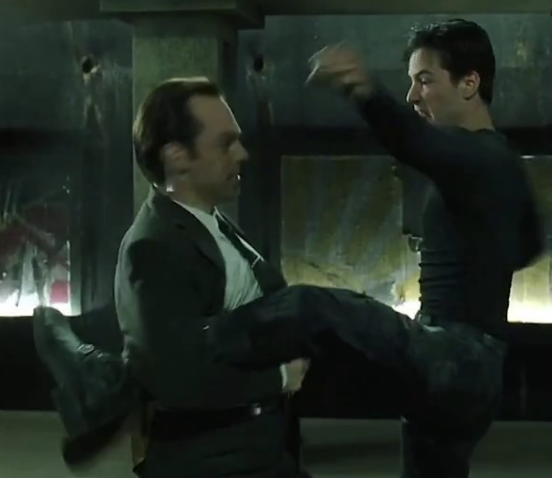
10/ The Road Back
The hero sees the light at the end of the tunnel, but they are about to face even more tests and challenges:
◻️ Luke and Co. bring Death Star plans to rebel base and are chased by Empire
◻️ Cypher betrays team and Neo is unable to exit The Matrix



The hero sees the light at the end of the tunnel, but they are about to face even more tests and challenges:
◻️ Luke and Co. bring Death Star plans to rebel base and are chased by Empire
◻️ Cypher betrays team and Neo is unable to exit The Matrix
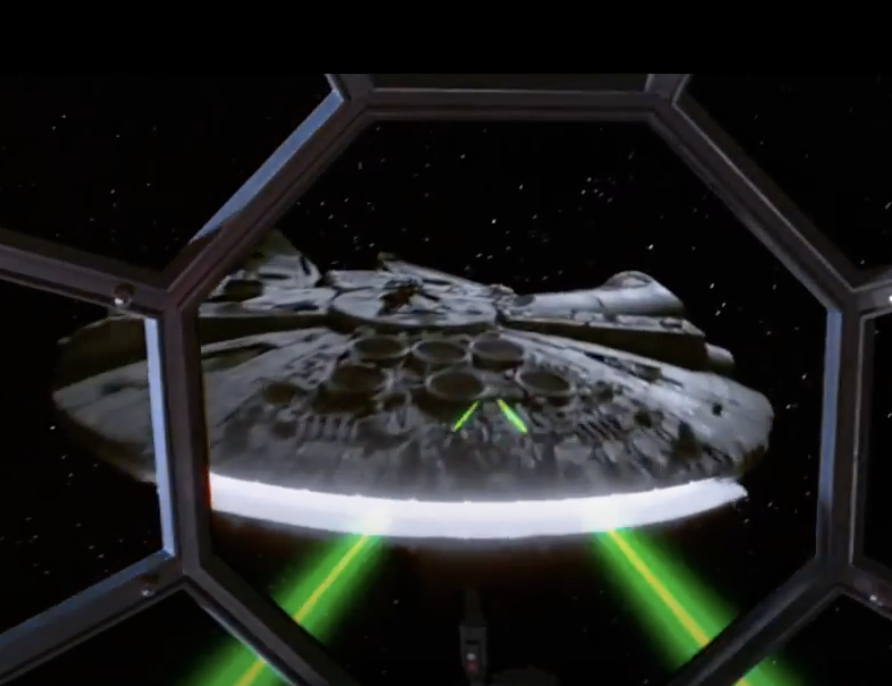
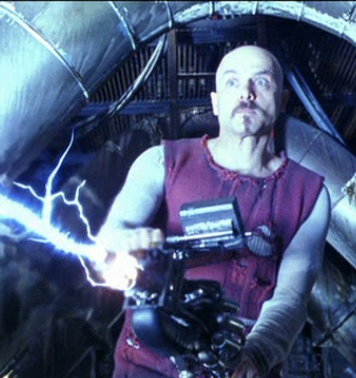
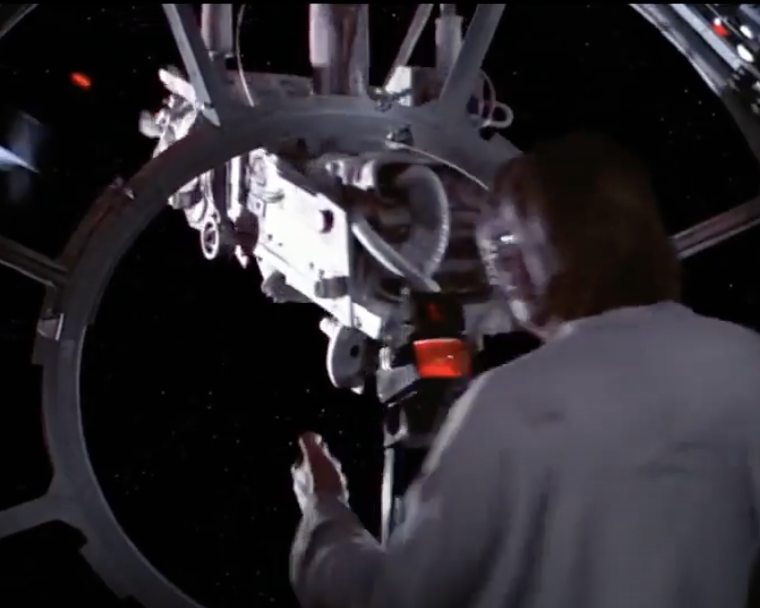

11/ Resurrection
The climax. The hero faces a final test, using everything they have learned to prevail:
◻️ Luke, Co. and rebels take on the Death Star (Luke uses the force to aim the kill shot)
◻️ Neo is killed by agents, resurrected by Trinity..he's The One and stops bullets



The climax. The hero faces a final test, using everything they have learned to prevail:
◻️ Luke, Co. and rebels take on the Death Star (Luke uses the force to aim the kill shot)
◻️ Neo is killed by agents, resurrected by Trinity..he's The One and stops bullets

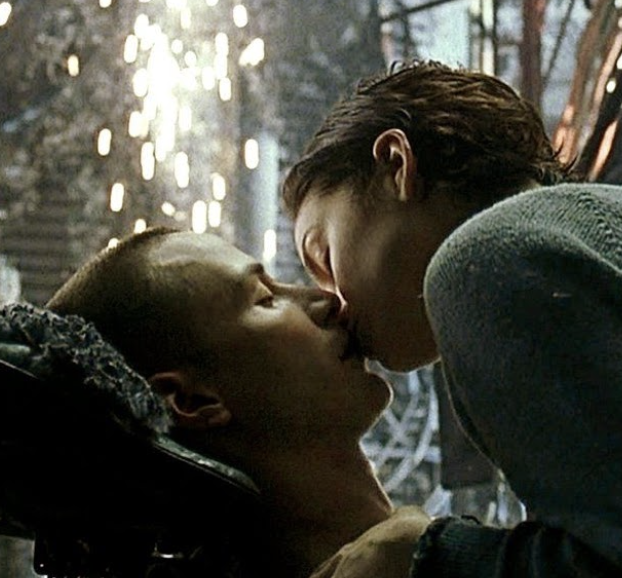
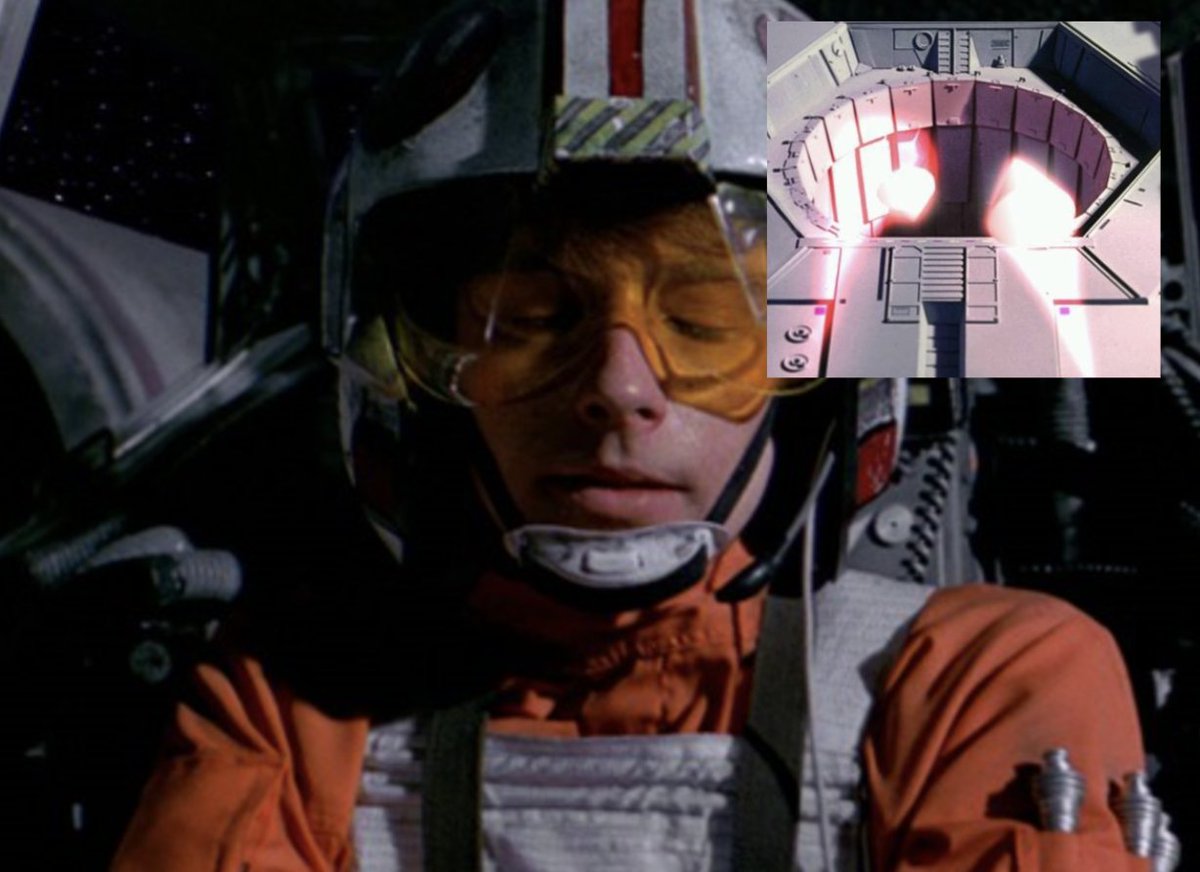
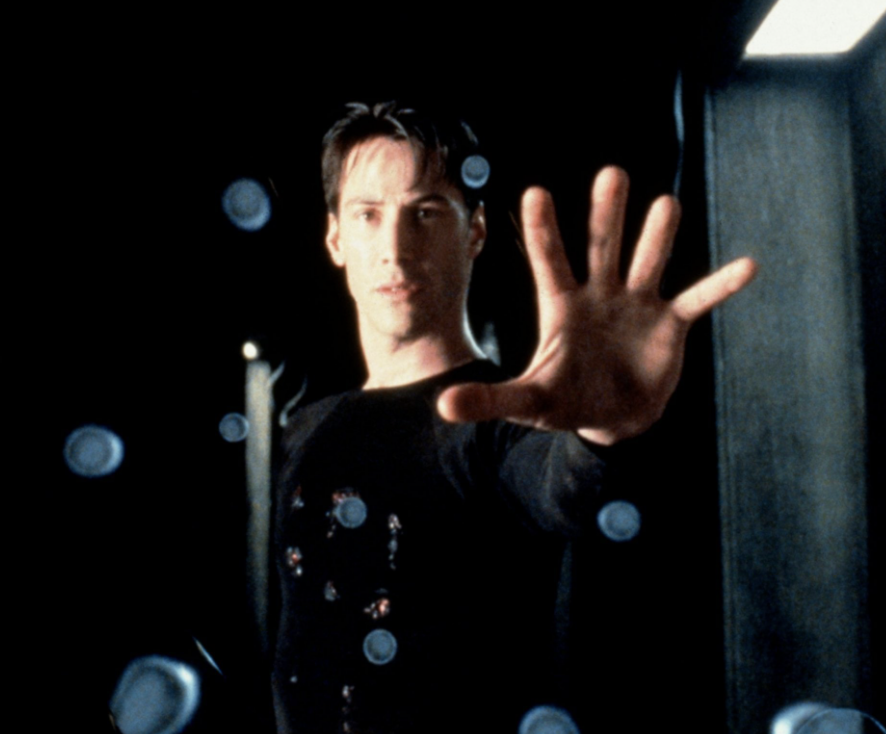
12/ Return With Elixir
The hero brings their knowledge or the “elixir” back to the ordinary world.
◻️ Luke is a f*cking Jedi and gets a fat medal for it
◻️ Neo can f*cking fly, is The One and is gonna cause some havoc in The Matrix

The hero brings their knowledge or the “elixir” back to the ordinary world.
◻️ Luke is a f*cking Jedi and gets a fat medal for it
◻️ Neo can f*cking fly, is The One and is gonna cause some havoc in The Matrix

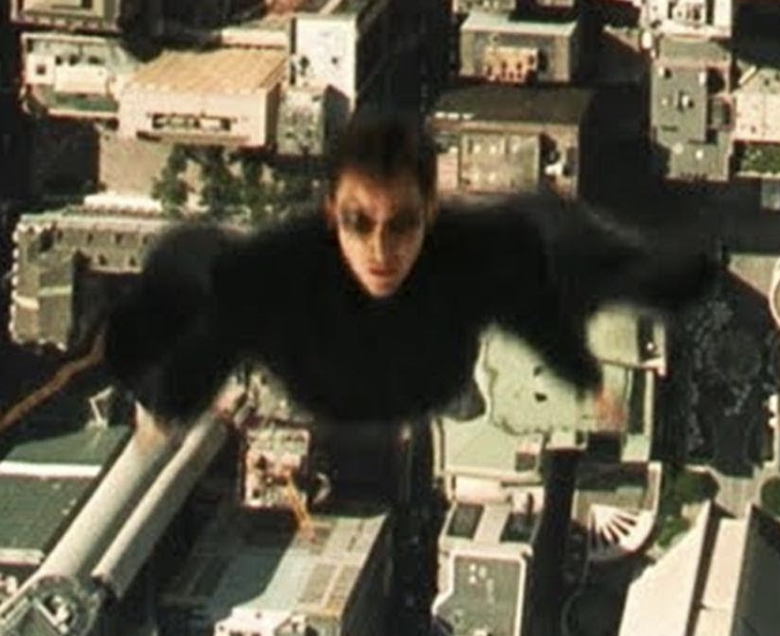
13/ Star Wars' creator George Lucas credits "The Hero's Journey" for improving his original script.
Prior to applying the framework, Star Wars -- as composer John Williams explained -- was "a Saturday morning space movie."
Lucas clearly saw his own hero's journey, too ("Luke")
Prior to applying the framework, Star Wars -- as composer John Williams explained -- was "a Saturday morning space movie."
Lucas clearly saw his own hero's journey, too ("Luke")
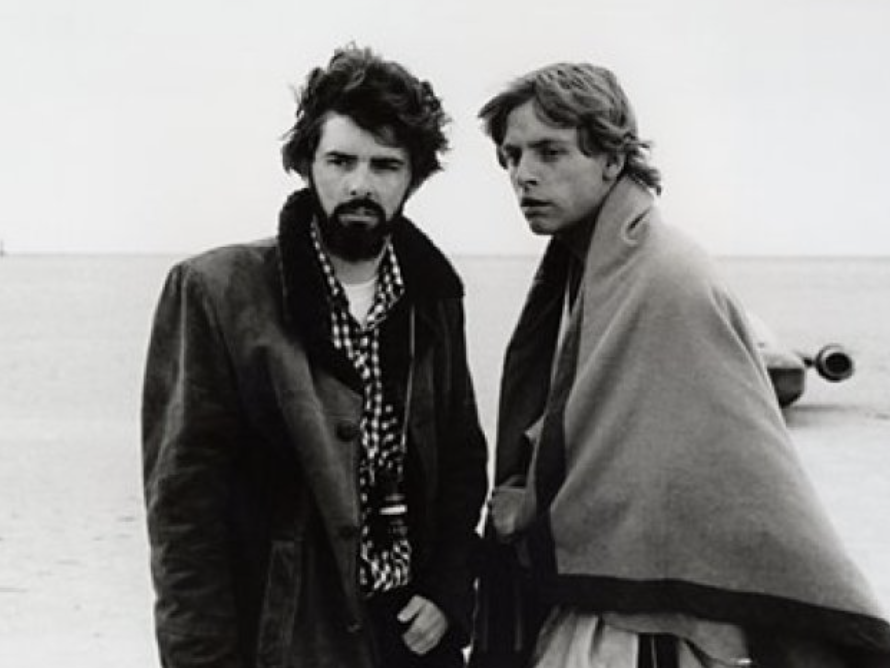
14/ Since Star Wars, countless other films have used the framework (obviously The Matrix); structure varies.
I use a Sheets template to map out other Hero's Journey (like for MJ and Lebron 😂).
Sheet link here and def SMASH that follow: @TrungTPhan
🔗 bit.ly/2QoTh7c
I use a Sheets template to map out other Hero's Journey (like for MJ and Lebron 😂).
Sheet link here and def SMASH that follow: @TrungTPhan
🔗 bit.ly/2QoTh7c

15/ Sources
Star Wars: thescriptlab.com/features/scree…
The Matrix: thescriptlab.com/features/scree…
George Lucas: starwars.com/news/mythic-di…
How The Matrix updated Hero's Journey for 1990s: escapistmagazine.com/v2/the-matrix-…
Star Wars: thescriptlab.com/features/scree…
The Matrix: thescriptlab.com/features/scree…
George Lucas: starwars.com/news/mythic-di…
How The Matrix updated Hero's Journey for 1990s: escapistmagazine.com/v2/the-matrix-…
• • •
Missing some Tweet in this thread? You can try to
force a refresh



